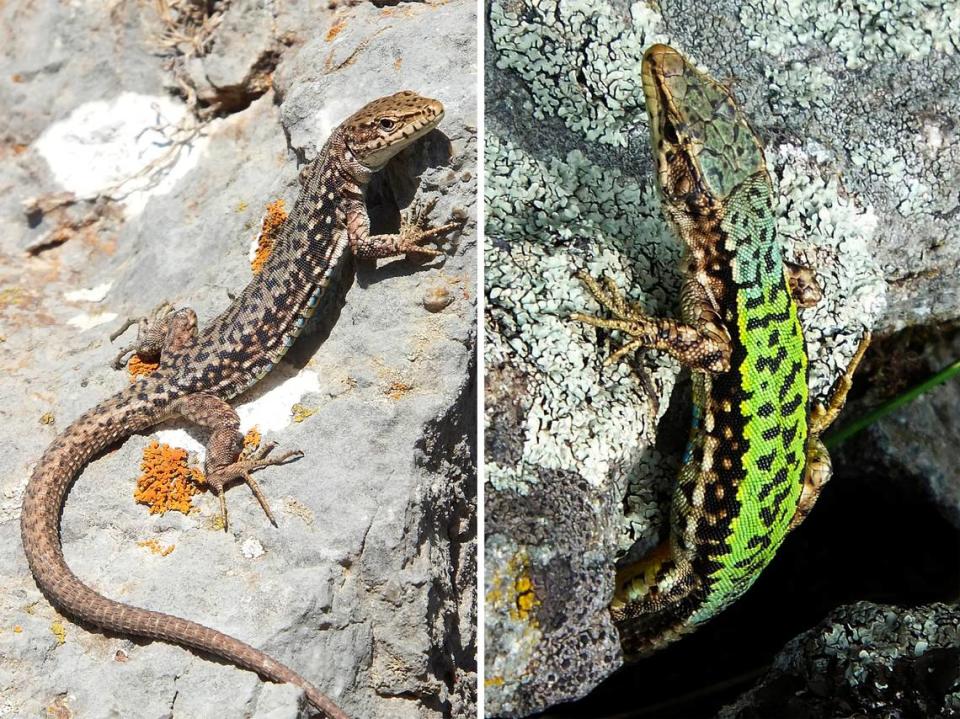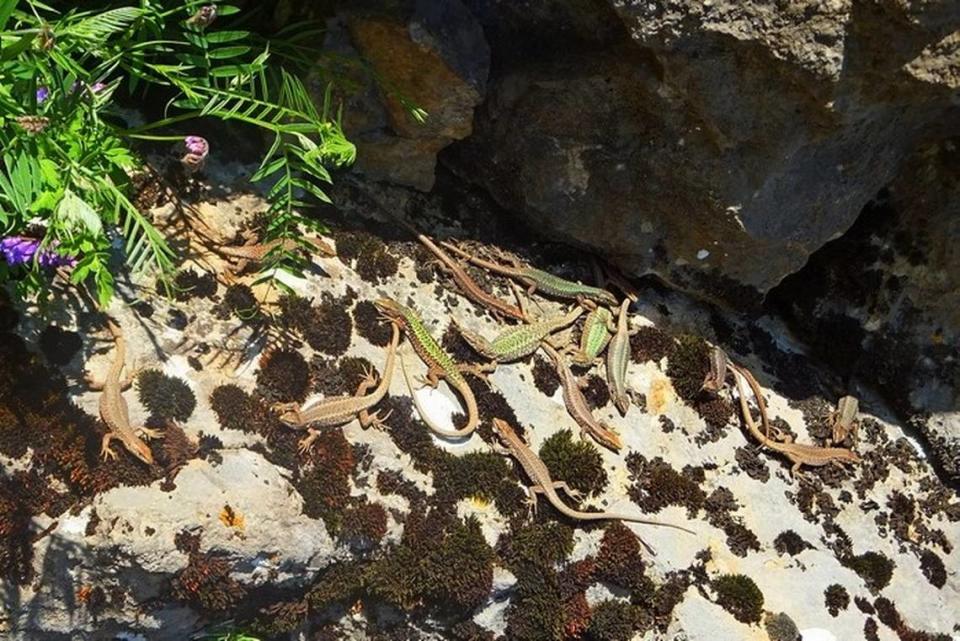Mountain creature with rows of extra ‘eyes’ found lurking in rocks. It’s a new species
Stretched out on a mossy rock within the country of Georgia, a multi-colored mountain creature basked in the sunshine. But it wasn’t alone.
Researchers ventured into the disputed territory of South Ossetia on expeditions in 2015 and 2017, according to a study published Aug. 29 in the Russian Journal of Herpetology. While searching the area around a mountain lake, the brightly colored reptile, and its companions, caught their attention.
The lizards were found lurking among the rocks, the study said. Researchers captured 23 specimens and, after taking a closer look, realized they had discovered a new species: Darevskia arribasi, or Arribas’ rock lizard
Arribas’ rock lizards, which can reach about 7.5 inches in size, are “small” compared to other related species, researchers said. Females are larger than males, but males are more colorful.
Female Arribas’ rock lizards are brown with black and brown blotches down their back, photos show. Males are vibrant, almost neon green, with black patches on their back.
Photos show both have pointed claws that seem to help the animals cling to the rocks.

On their undersides and groins, Arribas’ rock lizards have an orange-yellow coloring, researchers said. Along their sides, the lizards have rows of extra “eyes.”
These “eyes” are “individual scales” with a “bright” blue coloring,” the study said.
Arribas’ rock lizards live in rocky outcroppings in alpine forests and meadows, researchers said. The species has only been found in South Ossetia but might live in nearby regions.
South Ossetia is a disputed territory within the country of Georgia. The landlocked region announced its independence from Georgia in 1992, BBC reported. Georgia and the “vast majority” of countries in the United Nations have not recognized the region as independent, the outlet reported.

Researchers named the new species after Oscar Arribas, a “famous” and “outstanding” herpetologist who studies rock lizards.
Arribas’ rock lizards were identified by their size, color and scale patterns, the study said. DNA analysis found the new species had between about 3% and 5% genetic divergence from other rock lizard species.
The research team included Boris Tuniyev, T. V. Petrova, Konstantin Yu Lotiev.
Black-throated sea creature found in ‘acid water’ in Indonesia. It’s a new species
‘Strongly territorial’ creature found way up in mountains of Peru. It’s a new species
Scaly pink sea creature with an extra ‘eye’ found in West Pacific. It’s a new species

